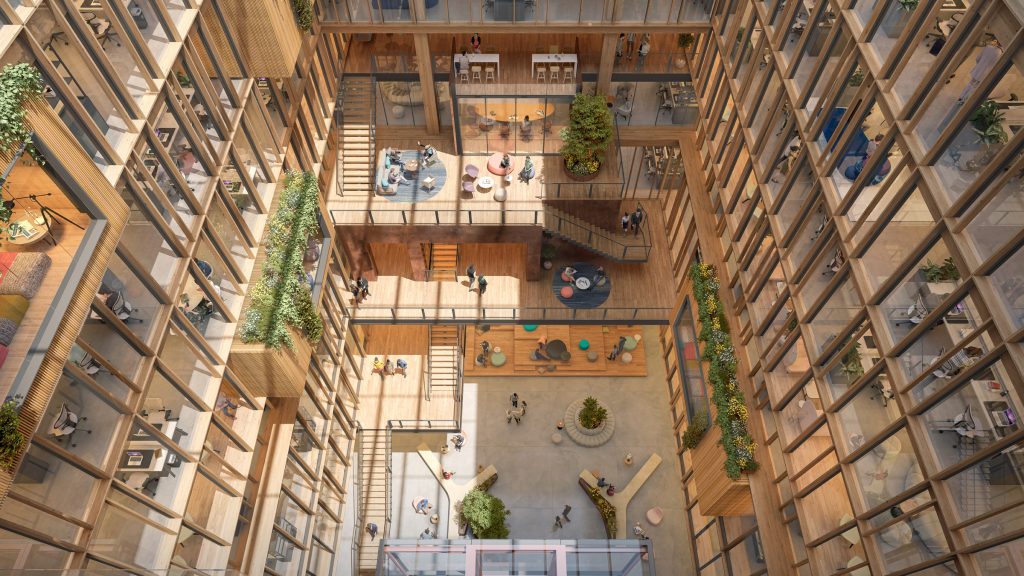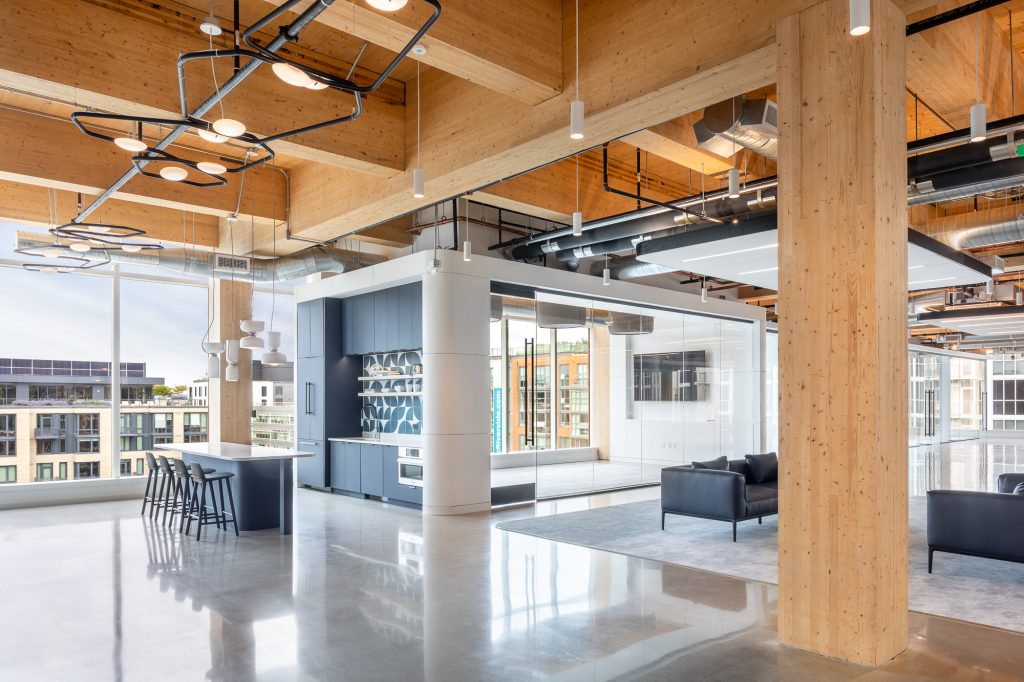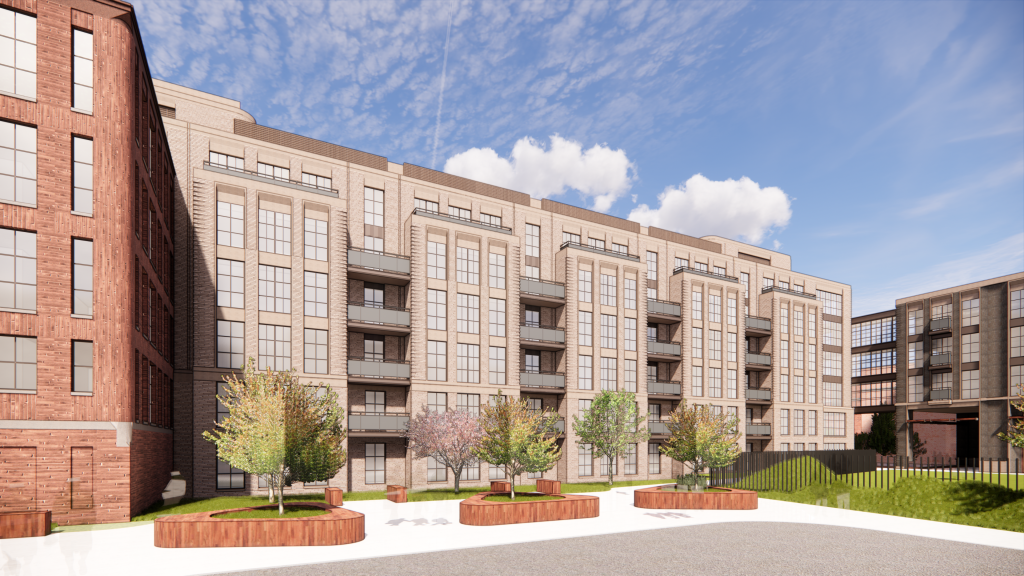Wood you join us?
We’re on a mission to mainstream mass timber. Beyond the biophilic benefits, this sustainable material has the potential to transform the way we work, the environments we inhabit, and the future of our planet. But change doesn’t come without challenges, and mass timber design and construction face unique barriers to entry and regulatory hurdles. That’s where we come in. As the design team behind the first commercial mass timber construction in DC, we know first-hand the path and partners required to turn our CLT dream into reality. Are you in?
US CLT projects complete or in design (WoodWorks, 2022)
total reduction in global CO2 emissions if timber replaced steel(Journal of Sustainable Forestry)
of the carbon footprint of a similarly-sized steel and concrete building
Wood's Big Comeback
Wood is one of the first materials we used to create architectural living structures. Easily acquired, manipulated, and maintained, the popularity of wood has waxed and waned over time. With new fabrication techniques and products now available, it’s possible to incorporate wood in innovative ways, even as a safe, strong, and sustainable replacement for concrete and steel.

Making the Case for Mass Timber
Key Benefits
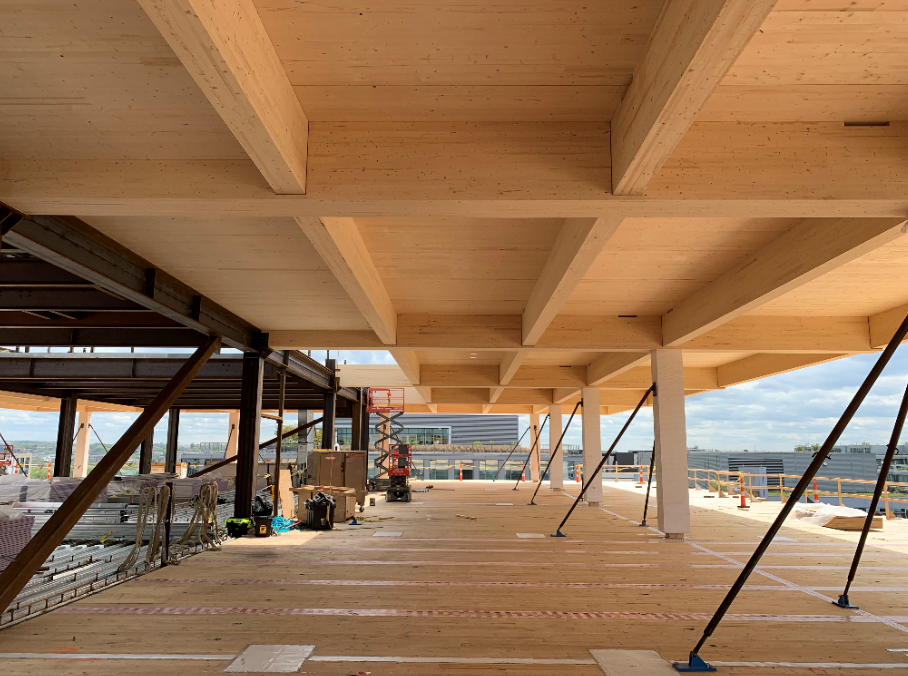
Speed to Market
New innovations in glue, nail, and cross lamination products mean timber can now be used in heavy applications, resulting in shorter construction schedules, and safer and cleaner on-site environments. Timber can also be prefabricated into panel or structural columns, condensing construction timelines, minimizing labor costs, increasing quality assurance, and reducing on-site waste. According to Think Wood, on average, mass timber takes 2.9 months to fabricate in the factory and 60 days to erect on-site.
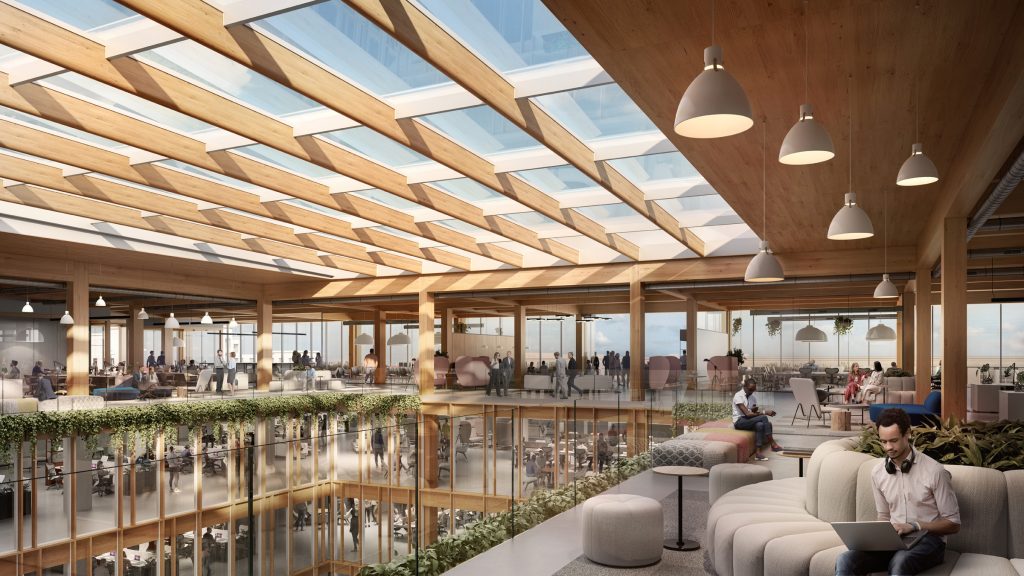
Sustainable Star
Mass timber is the only truly renewable construction material and the only material that actually removes carbon from the atmosphere during its lifetime. In fact, its total carbon footprint can be up to a third smaller than similarly sized steel and concrete buildings, with major energy savings created through far greater thermal efficiency. When sustainably and responsibly sourced, timber is harvested and replenished within a short time frame and with low environmental impact while contributing to local rural economies.

Occupant Health
The defined connection between human, building, and environmental health is a prominent factor driving today’s design conversations. Considerable research points to the positive impact of biophilic and sustainable design strategies on occupants. The mere presence of natural and organic materials like wood has been proven to reduce stress levels and increase a sense of wellbeing while the scent of alpha-pinene (pine tree oil) has been observed to lower heart rate and blood pressure.
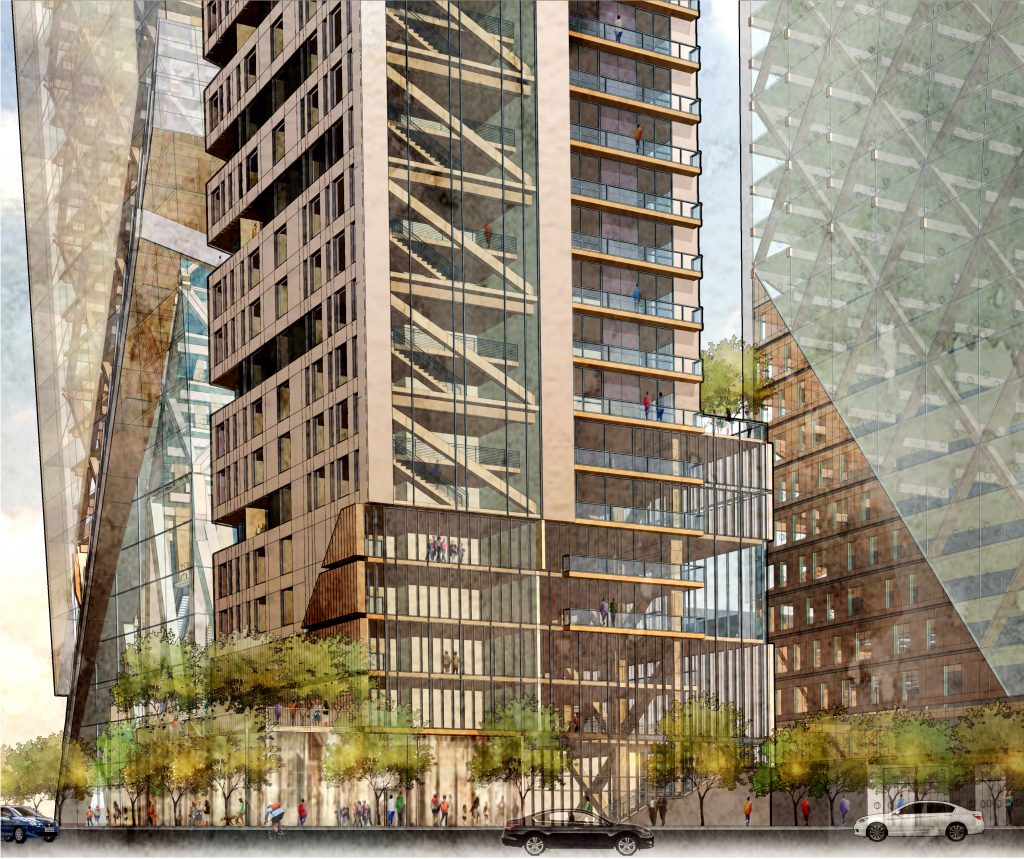
Timber Can Tower
With a significantly higher strength-to-weight ratio than concrete or steel, wood—when detailed properly—rivals their performance in fire testing and can even withstand earthquakes and dissipate the energy of shaking more readily than steel structures. Our award-winning Timber Towers concept explored the limits of building tall with timber, proving wood is the future of skyscrapers.

“We are at a point where we are having a discussion about timber from the get-go. We see the potential and we are introducing timber from day one. As more timber projects get done, it will show the owners a clear path from design to shovel in the ground. We’re going to see more of it delivered in all of our markets.”
“We’ve seen buildings across the market trying to differentiate with bigger, better amenities like rooftop decks, gyms, conference centers, lounges. Now that most buildings have those amenities, we’re looking for the next level to stand out. Creating engaging places where people want to work and live or socialize — that’s the key. And mass timber is something that helps you create that kind of environment.”
“A lot of people don’t understand how new forest growth sequesters more carbon, and how sustainable cutting and regrowing by the timber industry actually sequesters more carbon than old growth forests. Being able to tell those stories helped us push 80 M forward with the zoning administrators.”
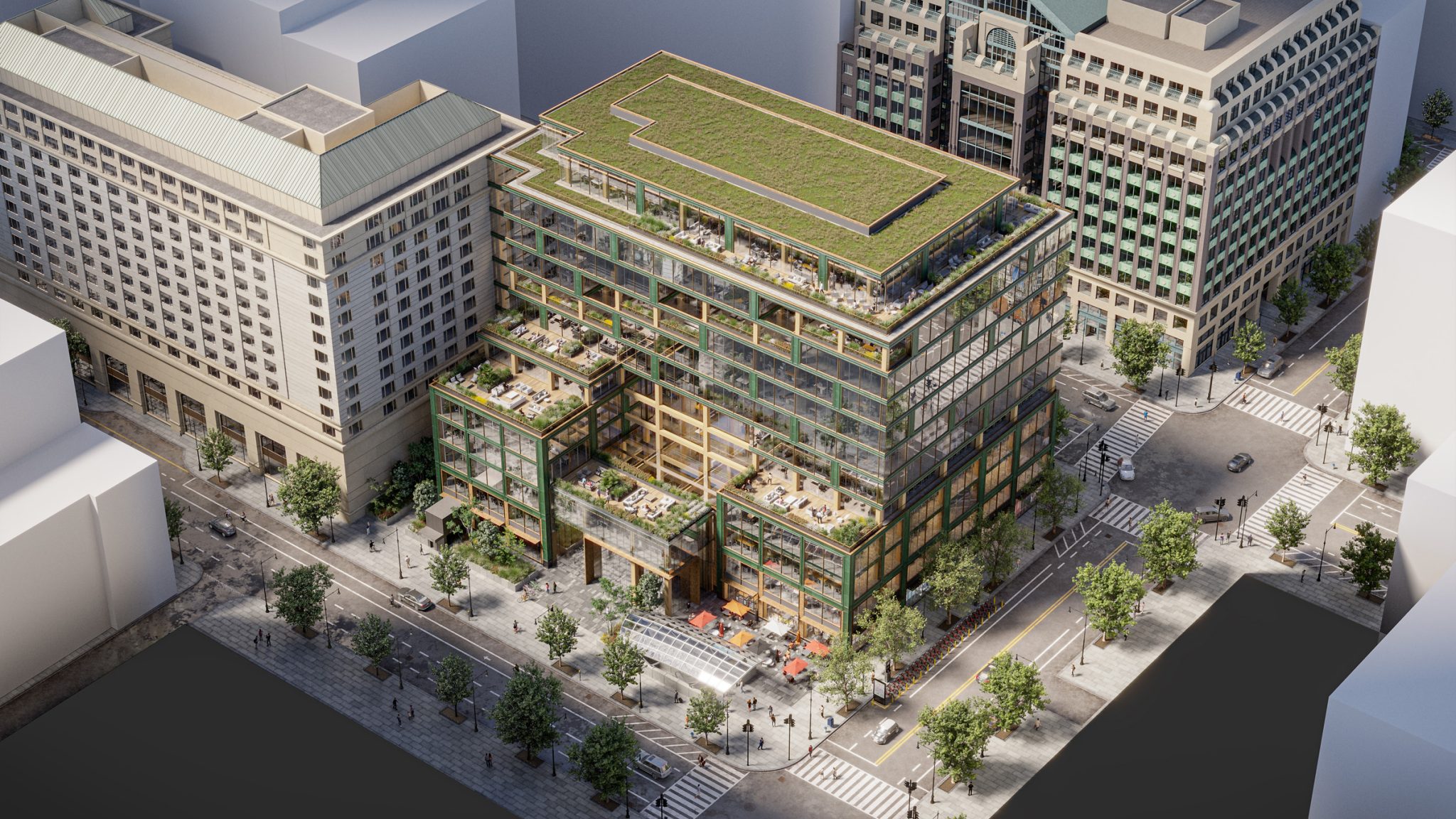

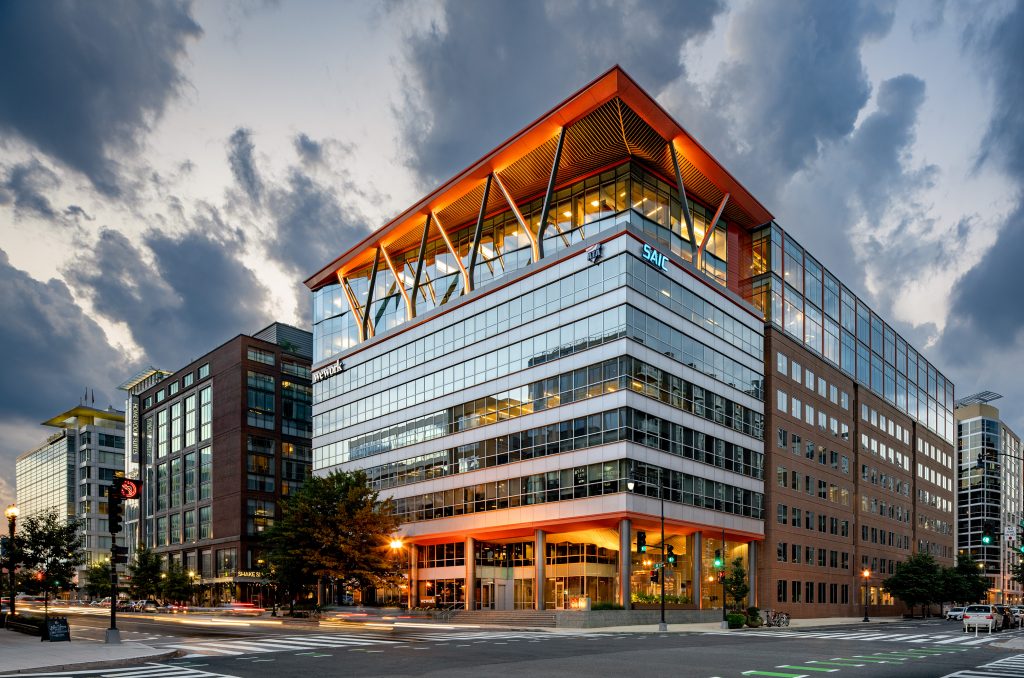
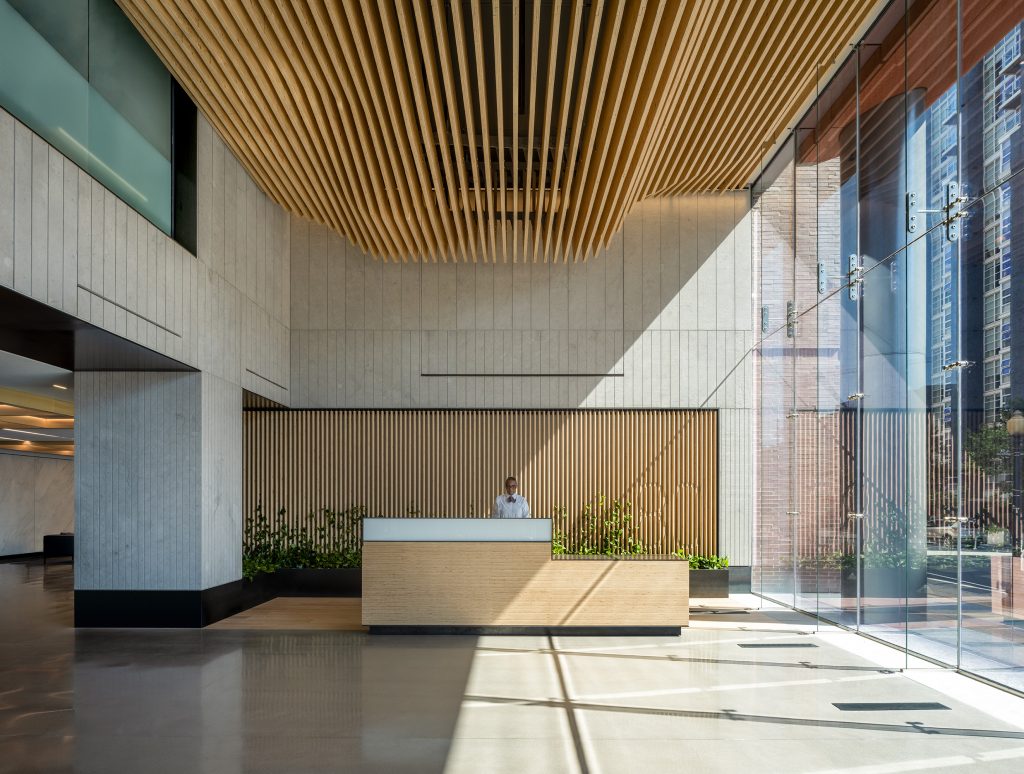
Overcoming Obstacles
Timber’s biggest barriers to entry are lack of experience and knowledge, existing regulatory frameworks, and cost. As a result, we work with partners to actively engage and educate the marketplace about its application and benefits. By initiating dialogue with local officials about zoning restrictions and code adoption, we can establish an alternate compliance path to accommodate timber construction. Engaging contractors and fabricators to price and validate our models provides greater insight into the timber supply chain and what’s needed to drive costs down—including increased demand created by government incentive programs and tax credits.
Let's Do This
Mass timber is already widely in use across Europe, Asia, and Canada. Though it’s gained steady momentum in west coast states where forestry and land are abundant, there are still very few east coast examples. This presents an opportunity for excellent returns on investment for early adopters looking to lead sustainable movements in these markets. With Washington, DC’s first-ever mass timber office building and multiple exploratory grants under our belt, we’re all-in on this sustainable material and committed to advocating for its use in DC and beyond. Bring on our next challenge!
In the Press

A Conversation with Hickok Cole: Tom Corrado + Jason Wright
Think Wood profiles 80 M team leaders Tom and Jason on the challenges, opportunities, and trends driving the design of DC’s first mass timber building
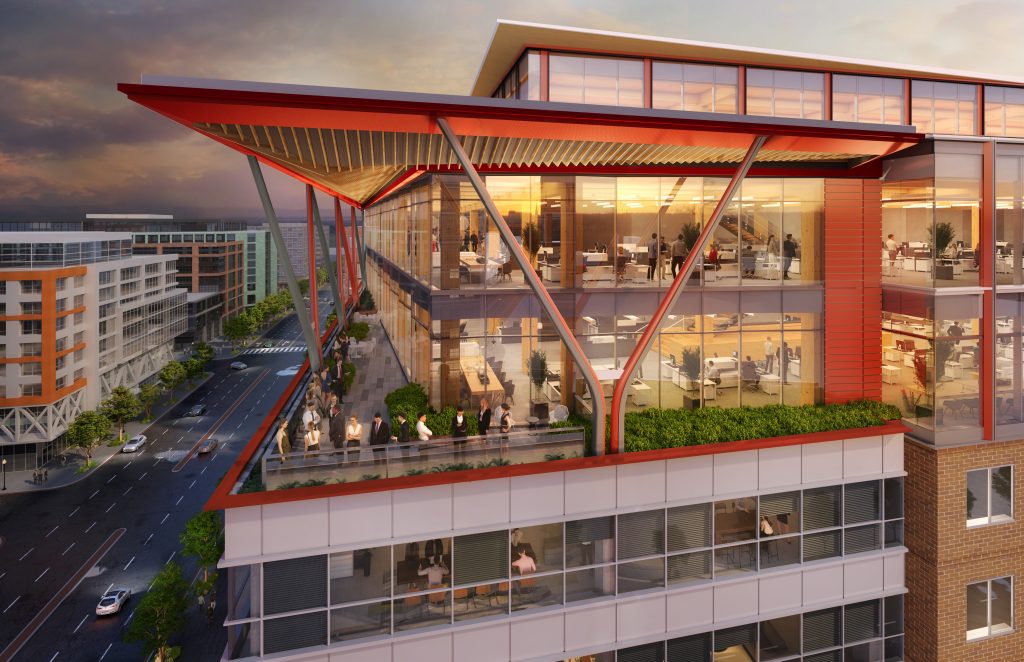
CXP’s Office Renovation to Become DC’s First Mass Timber Project
Commercial Observer breaks the news on Columbia Property Trust’s efforts to bring the first commercial mass timber development to the District
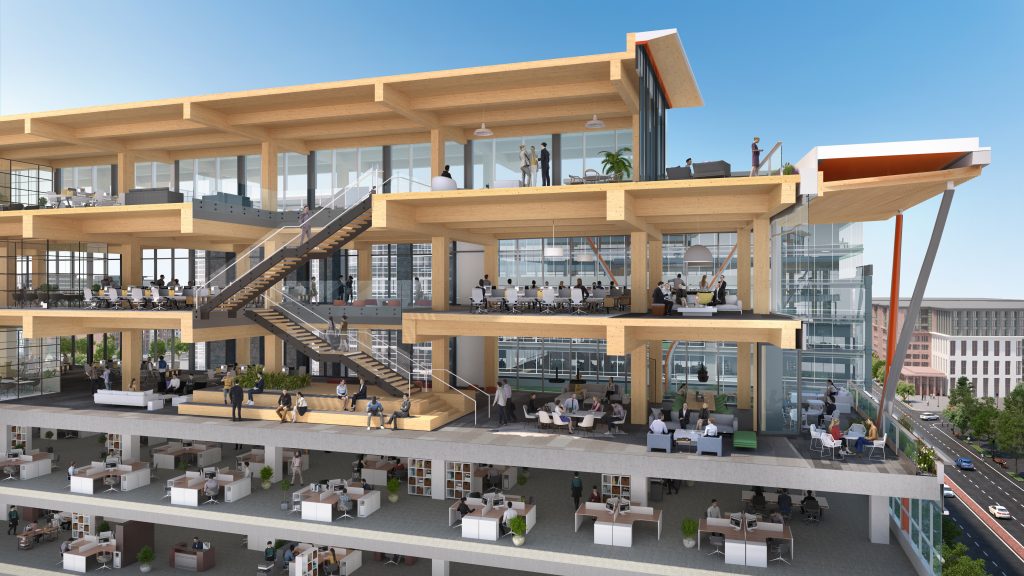
Mass Timber Expansion Project Underway at 80 M Street
Nareit profiles 80 M Street, talking with Columbia Property Trusts’s Paul Teti about their approach to differentiation in the competitive DC market
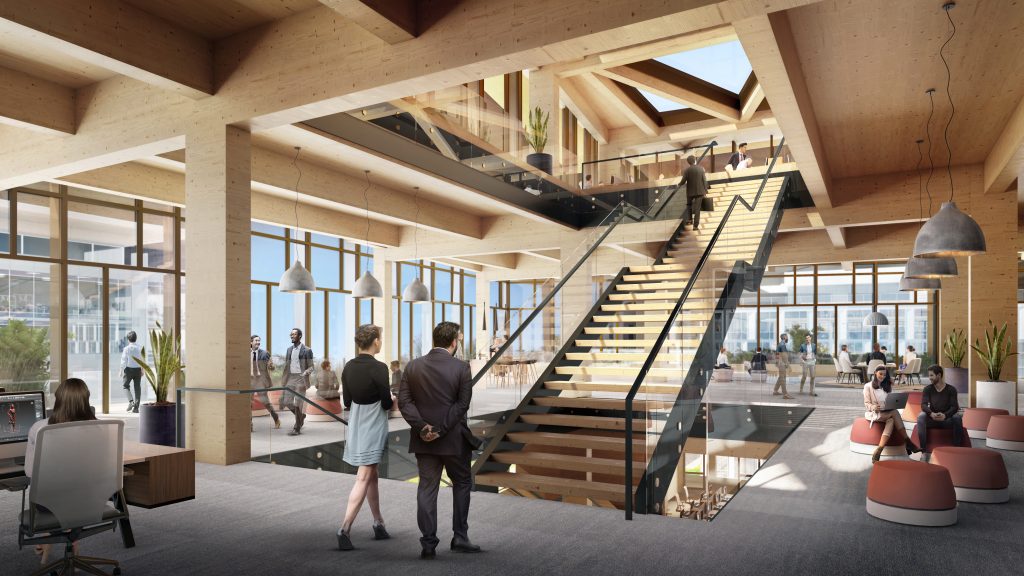
Navy Yard Building’s Timber Topping Gets its First Tenant
Washington Business Journal covers American Trucking Associations 16-year, 60,000-SF lease in 80 M Street’s mass timber expansion
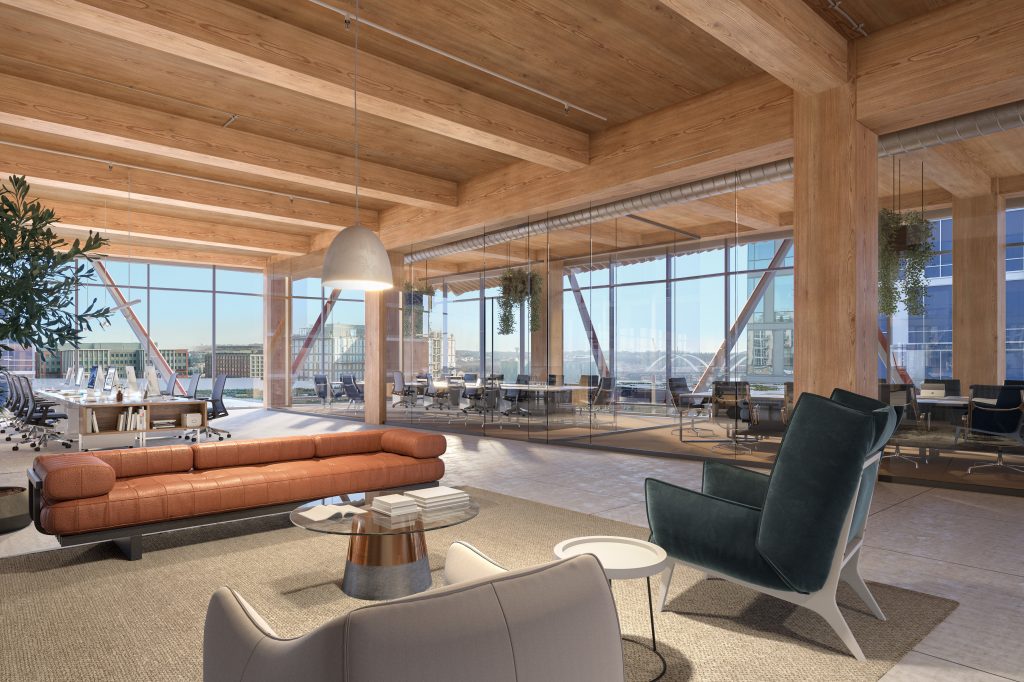
The Timber Revolution: A Guide
Civil + Structural Engineer Magazine shares our guide to mass timber design and construction, including an overview of market perception, code and supply challenges, and environmental benefits.

Mass Timber Construction Grows Up
Building Design + Construction explores mass timber’s market momentum, including Columbia Property Trust’s value play at 80 M Street NW.

Timber Towers: Skyhive Skyscraper Challenge Honorable Mention
Meet the team behind the award-winning Timber Towers concept designed to demonstrates the viability of mass timber high-rise construction.
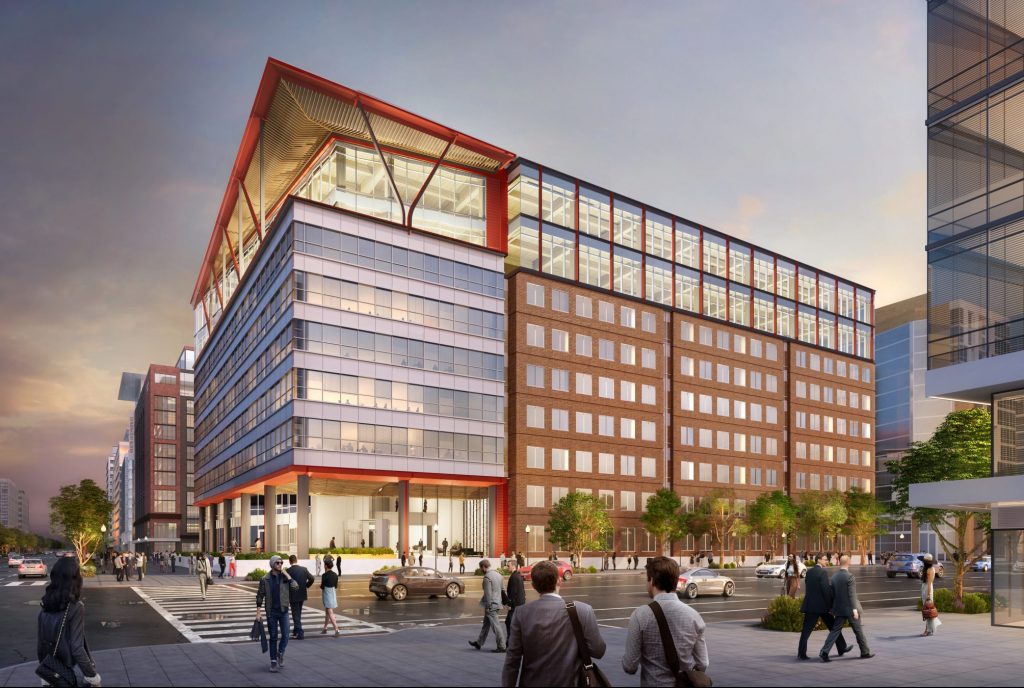
80 M Street Case Study
Think Wood talks with the 80 M team to learn more about what drove their decision to build with mass timber and how the market is responding.
Just Getting Started?
There’s a lot to learn when it comes to mass timber. But we’ve got the bases covered in our Intro to Mass Timber. Download it today to learn more about what mass timber is, why it matters, how it works, where it comes from, AND how much it costs.

